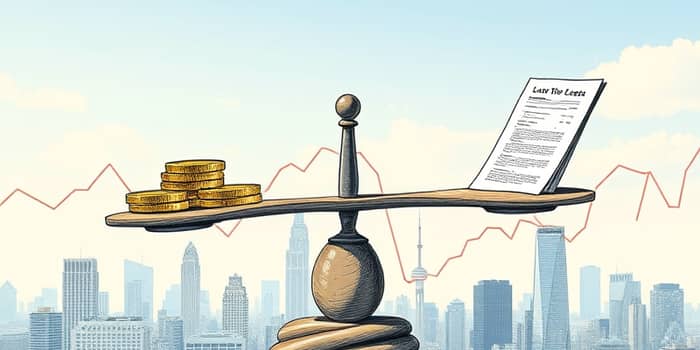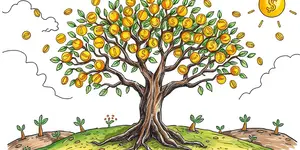
In an ever-changing economy, interest rates play a defining role in shaping your financial reality. Understanding how they work can transform simple decisions into powerful wealth-building strategies. From purchasing a new home to saving for a rainy day, grasping the nuances of borrowing costs and investment returns helps you take control of your money’s destiny. Central bank decisions, market expectations, and global events can cause rapid shifts. Keeping abreast of rate news empowers you to anticipate changes in borrowing costs and unlock new opportunities.
An interest rate represents the cost of borrowing money, expressed as a percentage of the amount you borrow or lend. When you take out a mortgage or car loan, the rate determines your monthly payment. Conversely, when you deposit funds into a savings account or buy a bond, it defines the return on savings or investments you can expect.
Several key types of interest rates influence financial decisions:
Long-term rates, such as 10- or 30-year Treasury yields, are driven by investor expectations. When the market forecasts growth or higher inflation, these rates tend to shift accordingly, influencing everything from mortgage terms to corporate debt costs.
Interest rates act as both a throttle and a brake for the economy. They determine how expensive it is to borrow and how rewarding it is to save. Even modest shifts can reverberate through markets, altering asset prices, consumer behavior, and corporate investment plans.
Even a quarter-point move—0.25%—can mean hundreds of dollars difference over the life of a mortgage. Awareness of rate trends helps you time credit card transfers, plan large purchases, and make strategic decisions for your business or personal budget.
The Federal Reserve (Fed) plays the central role in directing short-term interest rates by targeting the federal funds rate. Through open market operations, the Fed buys or sells government securities, adjusting bank reserves to reach its target. This influences all other rates in the U.S. financial system.
When inflation rises above the Fed’s 2% goal, policymakers may raise rates to cool inflation or prevent the economy from overheating. Conversely, during economic slowdowns, rate cuts can stimulate economic activity by making loans more attractive.
The FOMC meets eight times a year to assess economic conditions and adjust the policy stance. Forward guidance and press conferences also shape market expectations for future rate paths.
Interest rates have an inversely related connection to the money supply. When the Fed injects cash into the banking system, rates tend to fall, making credit cheaper. Conversely, withdrawing reserves pushes rates higher, tightening borrowing conditions.
By expanding or shrinking the money supply, the Fed nudges interest rates to achieve its dual mandate of price stability and maximum employment. Monitoring these shifts helps you anticipate changes in loan costs and investment yields.
During quantitative easing programs, the Fed buys large volumes of assets, injecting liquidity that pushes short-term rates down even further, creating a more accommodative credit environment.
Your monthly loan payments, credit card balances, and mortgage rates are all directly shaped by prevailing interest rates. Understanding these dynamics lets you time major purchases and refinancing moves to your advantage.
For example, average credit card rates in mid-2024 hovered around 20%, reflecting Fed hikes, while auto loan rates ranged between 5–10% depending on term and credit score.
Interest rates determine how much you earn on cash reserves and fixed-income investments. In high-rate environments, newly issued bonds and certificates of deposit offer higher returns on new deposits, boosting income streams for savers and retirees.
However, retirees dependent on interest income may see their savings grow slowly during low-rate periods. This highlights the importance of building a diversified portfolio that balances equities, bonds, and cash to weather rate fluctuations.
Maintaining liquid reserves is vital when rates spike. Emergency funds in high-yield savings accounts can earn 4% or more as online banks compete for depositor dollars, providing both safety and growth potential.
Interest income from savings accounts, CDs, and bonds generally counts as taxable income in the year it is earned. Traditional IRAs allow for tax-deferred interest gains, whereas Roth IRAs offer tax-free growth if withdrawal rules are met. Keeping tax treatment in mind ensures your after-tax yield aligns with financial goals.
Interest from certain municipal bonds may be exempt from federal and state taxes, offering a tax-efficient income source for high-earners in elevated rate climates.
When rates change, adjusting your strategy can help protect and grow your wealth. Consider these actionable steps:
Throughout the early 2020s, rates hovered near historic lows, dropping below 0.25% post-2020 crisis. By 2024, as inflationary pressures mounted, the federal funds rate climbed above 5%. Mortgage rates dipped under 3% in 2021, only to soar past 7% by 2023, mirroring Fed policy moves.
Looking ahead, markets anticipate rate cuts only once inflation demonstrates sustainable declines. While predictions vary, a disciplined approach to debt and savings positions you to benefit from any downward adjustments.
Interest rates will continue to ebb and flow as policymakers balance growth and inflation. By grasping the broader consequences of rate adjustments—from loan costs to investment returns—you stand ready to make informed decisions.
Stay informed by following Fed announcements, economic indicators like CPI and unemployment, and consulting with financial professionals to tailor your strategy. With proactive planning, you can turn rate volatility into an advantage rather than a risk.
References













